Nawab Muhammad Faseeh Qureshi
AI and 6G into the Metaverse: Fundamentals, Challenges and Future Research Trends
Aug 23, 2022



Abstract:Since Facebook was renamed Meta, a lot of attention, debate, and exploration have intensified about what the Metaverse is, how it works, and the possible ways to exploit it. It is anticipated that Metaverse will be a continuum of rapidly emerging technologies, usecases, capabilities, and experiences that will make it up for the next evolution of the Internet. Several researchers have already surveyed the literature on artificial intelligence (AI) and wireless communications in realizing the Metaverse. However, due to the rapid emergence of technologies, there is a need for a comprehensive and in-depth review of the role of AI, 6G, and the nexus of both in realizing the immersive experiences of Metaverse. Therefore, in this survey, we first introduce the background and ongoing progress in augmented reality (AR), virtual reality (VR), mixed reality (MR) and spatial computing, followed by the technical aspects of AI and 6G. Then, we survey the role of AI in the Metaverse by reviewing the state-of-the-art in deep learning, computer vision, and edge AI. Next, we investigate the promising services of B5G/6G towards Metaverse, followed by identifying the role of AI in 6G networks and 6G networks for AI in support of Metaverse applications. Finally, we enlist the existing and potential applications, usecases, and projects to highlight the importance of progress in the Metaverse. Moreover, in order to provide potential research directions to researchers, we enlist the challenges, research gaps, and lessons learned identified from the literature review of the aforementioned technologies.
Industry 5.0 is Coming: A Survey on Intelligent NextG Wireless Networks as Technological Enablers
May 18, 2022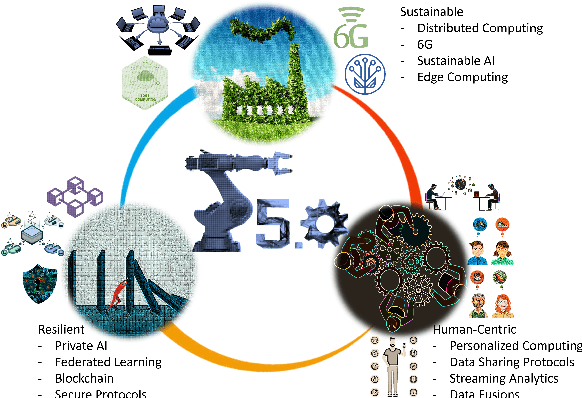
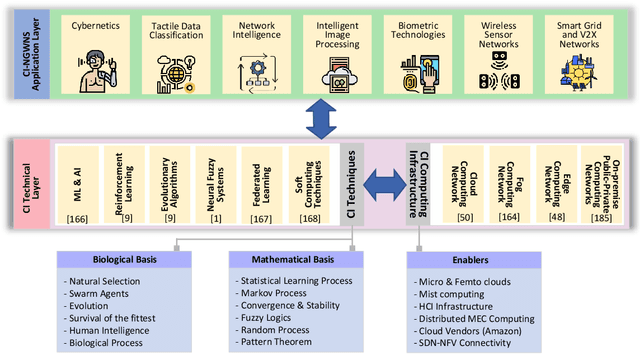
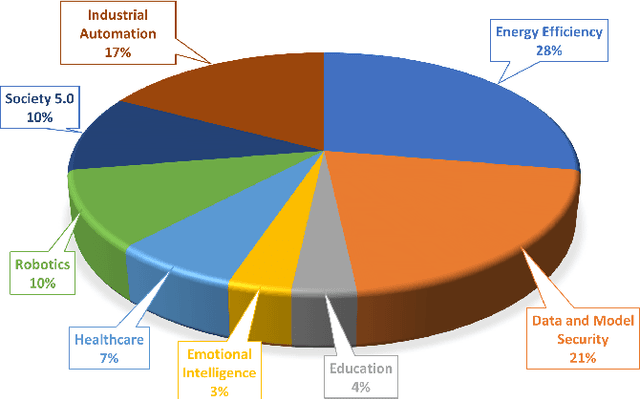
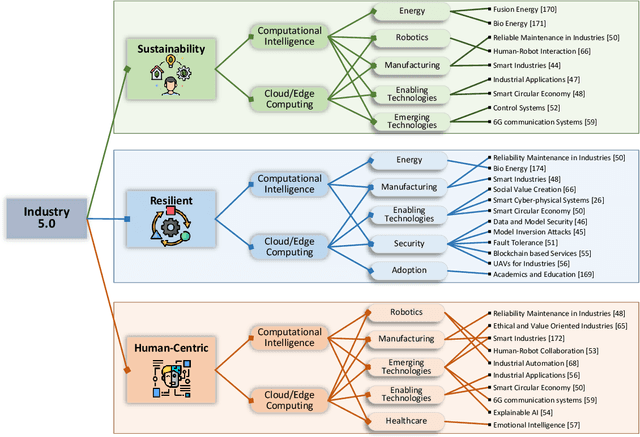
Abstract:Industry 5.0 vision, a step toward the next industrial revolution and enhancement to Industry 4.0, envisioned the new goals of resilient, sustainable, and human-centric approaches in diverse emerging applications, e.g., factories-of-the-future, digital society. The vision seeks to leverage human intelligence and creativity in nexus with intelligent, efficient, and reliable cognitive collaborating robots (cobots) to achieve zero waste, zerodefect, and mass customization-based manufacturing solutions. However, the vision requires the merging of cyber-physical worlds through utilizing Industry 5.0 technological enablers, e.g., cognitive cobots, person-centric artificial intelligence (AI), cyberphysical systems, digital twins, hyperconverged data storage and computing, communication infrastructure, and others. In this regard, the convergence of the emerging computational intelligence (CI) paradigm and next-generation wireless networks (NGWNs) can fulfill the stringent communication and computation requirements of the technological enablers in the Industry 5.0 vision, which is the aim of this survey-based tutorial. In this article, we address this issue by reviewing and analyzing current emerging concepts and technologies, e.g., CI tools and frameworks, network-in-box architecture, open radio access networks, softwarized service architectures, potential enabling services, and others, essential for designing the objectives of CINGWNs to fulfill the Industry 5.0 vision requirements. Finally, we provide a list of lessons learned from our detailed review, research challenges, and open issues that should be addressed in CI-NGWNs to realize Industry 5.0.
IIFNet: A Fusion based Intelligent Service for Noisy Preamble Detection in 6G
Apr 22, 2022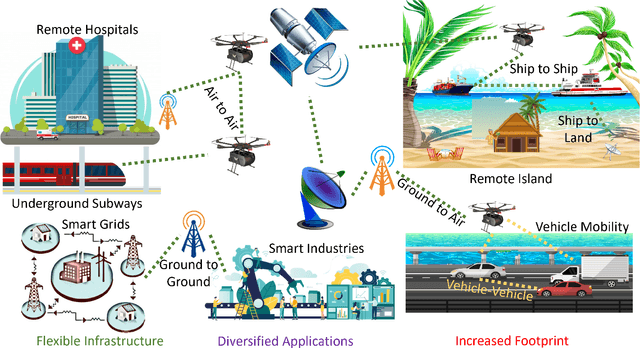
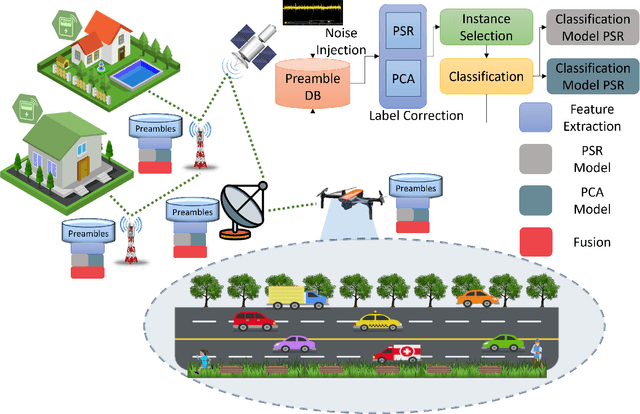

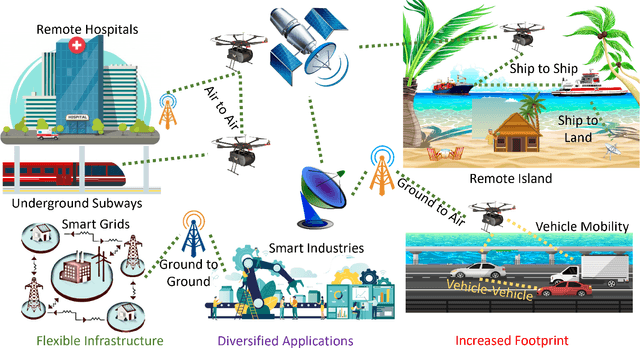
Abstract:In this article, we present our vision of preamble detection in a physical random access channel for next-generation (Next-G) networks using machine learning techniques. Preamble detection is performed to maintain communication and synchronization between devices of the Internet of Everything (IoE) and next-generation nodes. Considering the scalability and traffic density, Next-G networks have to deal with preambles corrupted by noise due to channel characteristics or environmental constraints. We show that when injecting 15% random noise, the detection performance degrades to 48%. We propose an informative instance-based fusion network (IIFNet) to cope with random noise and to improve detection performance, simultaneously. A novel sampling strategy for selecting informative instances from feature spaces has also been explored to improve detection performance. The proposed IIFNet is tested on a real dataset for preamble detection that was collected with the help of a reputable commercial company.
* 7 pages, 3 figures, 2 tables, Accepted Article
Get your Foes Fooled: Proximal Gradient Split Learning for Defense against Model Inversion Attacks on IoMT data
Jan 20, 2022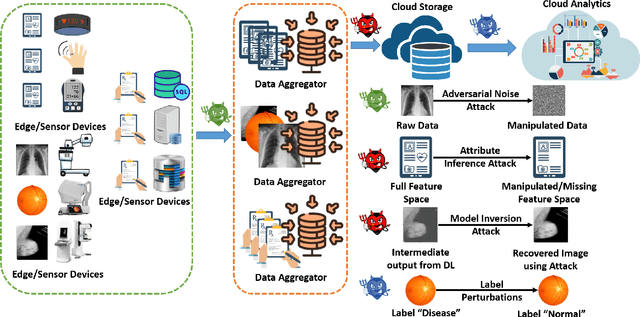
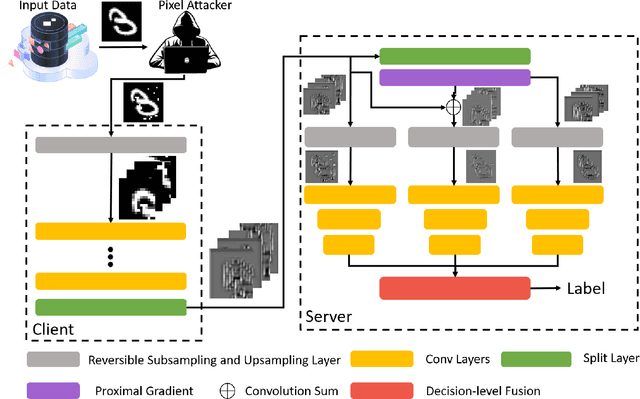
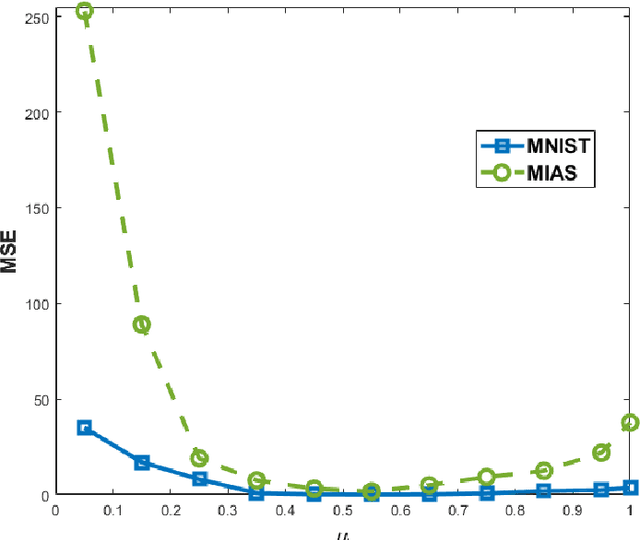
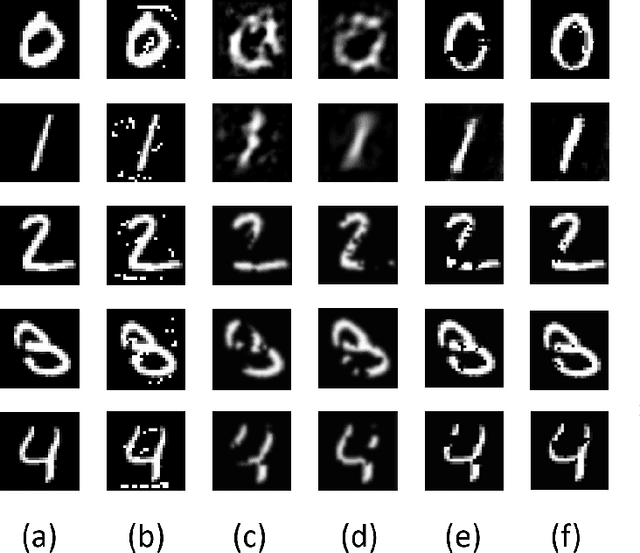
Abstract:The past decade has seen a rapid adoption of Artificial Intelligence (AI), specifically the deep learning networks, in Internet of Medical Things (IoMT) ecosystem. However, it has been shown recently that the deep learning networks can be exploited by adversarial attacks that not only make IoMT vulnerable to the data theft but also to the manipulation of medical diagnosis. The existing studies consider adding noise to the raw IoMT data or model parameters which not only reduces the overall performance concerning medical inferences but also is ineffective to the likes of deep leakage from gradients method. In this work, we propose proximal gradient split learning (PSGL) method for defense against the model inversion attacks. The proposed method intentionally attacks the IoMT data when undergoing the deep neural network training process at client side. We propose the use of proximal gradient method to recover gradient maps and a decision-level fusion strategy to improve the recognition performance. Extensive analysis show that the PGSL not only provides effective defense mechanism against the model inversion attacks but also helps in improving the recognition performance on publicly available datasets. We report 17.9$\%$ and 36.9$\%$ gains in accuracy over reconstructed and adversarial attacked images, respectively.
Multimodal-Boost: Multimodal Medical Image Super-Resolution using Multi-Attention Network with Wavelet Transform
Oct 22, 2021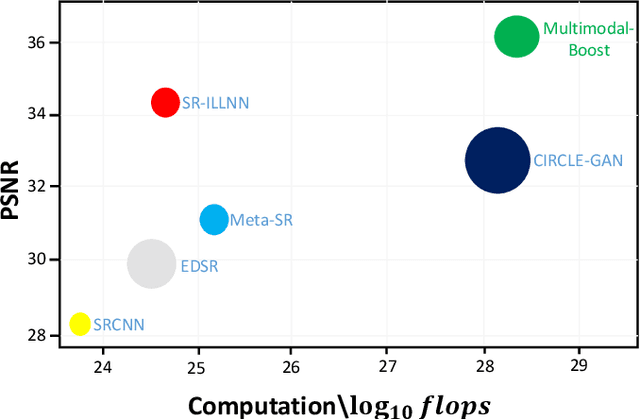

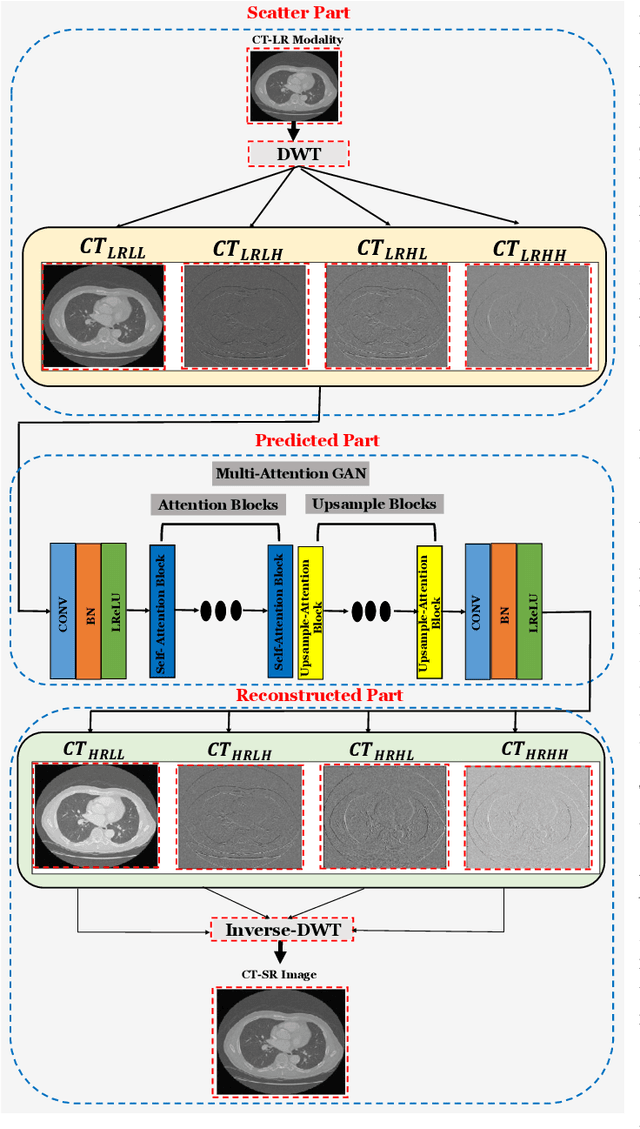

Abstract:Multimodal medical images are widely used by clinicians and physicians to analyze and retrieve complementary information from high-resolution images in a non-invasive manner. The loss of corresponding image resolution degrades the overall performance of medical image diagnosis. Deep learning based single image super resolution (SISR) algorithms has revolutionized the overall diagnosis framework by continually improving the architectural components and training strategies associated with convolutional neural networks (CNN) on low-resolution images. However, existing work lacks in two ways: i) the SR output produced exhibits poor texture details, and often produce blurred edges, ii) most of the models have been developed for a single modality, hence, require modification to adapt to a new one. This work addresses (i) by proposing generative adversarial network (GAN) with deep multi-attention modules to learn high-frequency information from low-frequency data. Existing approaches based on the GAN have yielded good SR results; however, the texture details of their SR output have been experimentally confirmed to be deficient for medical images particularly. The integration of wavelet transform (WT) and GANs in our proposed SR model addresses the aforementioned limitation concerning textons. The WT divides the LR image into multiple frequency bands, while the transferred GAN utilizes multiple attention and upsample blocks to predict high-frequency components. Moreover, we present a learning technique for training a domain-specific classifier as a perceptual loss function. Combining multi-attention GAN loss with a perceptual loss function results in a reliable and efficient performance. Applying the same model for medical images from diverse modalities is challenging, our work addresses (ii) by training and performing on several modalities via transfer learning.
Towards Industrial Private AI: A two-tier framework for data and model security
Jul 27, 2021



Abstract:With the advances in 5G and IoT devices, the industries are vastly adopting artificial intelligence (AI) techniques for improving classification and prediction-based services. However, the use of AI also raises concerns regarding data privacy and security that can be misused or leaked. Private AI was recently coined to address the data security issue by combining AI with encryption techniques but existing studies have shown that model inversion attacks can be used to reverse engineer the images from model parameters. In this regard, we propose a federated learning and encryption-based private (FLEP) AI framework that provides two-tier security for data and model parameters in an IIoT environment. We proposed a three-layer encryption method for data security and provided a hypothetical method to secure the model parameters. Experimental results show that the proposed method achieves better encryption quality at the expense of slightly increased execution time. We also highlighted several open issues and challenges regarding the FLEP AI framework's realization.
 Add to Chrome
Add to Chrome Add to Firefox
Add to Firefox Add to Edge
Add to Edge